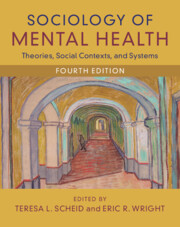Refine search
Actions for selected content:
37060 results in Cambridge Textbooks
Acknowledgement of Country
-
- Book:
- Contemporary Australian Corporate Law
- Published online:
- 11 September 2025
- Print publication:
- 25 September 2025, pp ii-ii
-
- Chapter
- Export citation
7 - Features, Case and Agreement
- from Part I - Configuration and Hierarchy
-
- Book:
- Continuing Syntax
- Published online:
- 03 October 2025
- Print publication:
- 25 September 2025, pp 139-156
-
- Chapter
- Export citation
15 - The Syntax of Silence II: Empty Pronouns
- from Part II - Locality
-
- Book:
- Continuing Syntax
- Published online:
- 03 October 2025
- Print publication:
- 25 September 2025, pp 290-303
-
- Chapter
- Export citation
Glossary
-
- Book:
- Continuing Syntax
- Published online:
- 03 October 2025
- Print publication:
- 25 September 2025, pp 324-340
-
- Chapter
- Export citation
Index
-
- Book:
- Continuing Syntax
- Published online:
- 03 October 2025
- Print publication:
- 25 September 2025, pp 342-348
-
- Chapter
- Export citation

Sociology of Mental Health
- Theories, Social Contexts, and Systems
-
- Published online:
- 18 September 2025
- Print publication:
- 24 July 2025
-
- Textbook
- Export citation
Abbreviations
-
- Book:
- Global Environmental Politics
- Published online:
- 04 September 2025
- Print publication:
- 18 September 2025, pp xviii-xx
-
- Chapter
- Export citation
Part I - Why Do Environmental Problems Occur?
-
- Book:
- Global Environmental Politics
- Published online:
- 04 September 2025
- Print publication:
- 18 September 2025, pp 17-84
-
- Chapter
- Export citation
6 - Conflict and Securitisation
- from Part II - Responding to Global Environmental Problems
-
- Book:
- Global Environmental Politics
- Published online:
- 04 September 2025
- Print publication:
- 18 September 2025, pp 87-111
-
- Chapter
- Export citation
8 - Transnational Governance
- from Part II - Responding to Global Environmental Problems
-
- Book:
- Global Environmental Politics
- Published online:
- 04 September 2025
- Print publication:
- 18 September 2025, pp 140-168
-
- Chapter
- Export citation
Index
-
- Book:
- Global Environmental Politics
- Published online:
- 04 September 2025
- Print publication:
- 18 September 2025, pp 395-399
-
- Chapter
- Export citation
4 - Capitalism and Growth
- from Part I - Why Do Environmental Problems Occur?
-
- Book:
- Global Environmental Politics
- Published online:
- 04 September 2025
- Print publication:
- 18 September 2025, pp 52-68
-
- Chapter
- Export citation
Contents
-
- Book:
- Global Environmental Politics
- Published online:
- 04 September 2025
- Print publication:
- 18 September 2025, pp v-xi
-
- Chapter
- Export citation
Copyright page
-
- Book:
- Global Environmental Politics
- Published online:
- 04 September 2025
- Print publication:
- 18 September 2025, pp iv-iv
-
- Chapter
- Export citation
5 - Systems of Domination
- from Part I - Why Do Environmental Problems Occur?
-
- Book:
- Global Environmental Politics
- Published online:
- 04 September 2025
- Print publication:
- 18 September 2025, pp 69-84
-
- Chapter
- Export citation
References
-
- Book:
- Global Environmental Politics
- Published online:
- 04 September 2025
- Print publication:
- 18 September 2025, pp 338-394
-
- Chapter
- Export citation
Figures
-
- Book:
- Global Environmental Politics
- Published online:
- 04 September 2025
- Print publication:
- 18 September 2025, pp xii-xiii
-
- Chapter
- Export citation
13 - Resistance and Localisation
- from Part II - Responding to Global Environmental Problems
-
- Book:
- Global Environmental Politics
- Published online:
- 04 September 2025
- Print publication:
- 18 September 2025, pp 280-311
-
- Chapter
- Export citation
3 - Population and Poverty
- from Part I - Why Do Environmental Problems Occur?
-
- Book:
- Global Environmental Politics
- Published online:
- 04 September 2025
- Print publication:
- 18 September 2025, pp 34-51
-
- Chapter
- Export citation
9 - Finance
- from Part II - Responding to Global Environmental Problems
-
- Book:
- Global Environmental Politics
- Published online:
- 04 September 2025
- Print publication:
- 18 September 2025, pp 169-200
-
- Chapter
- Export citation
